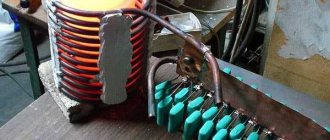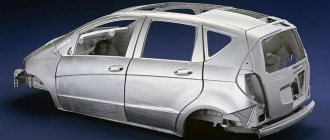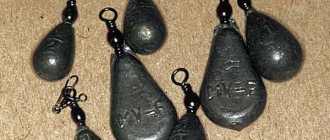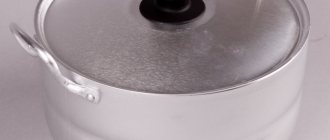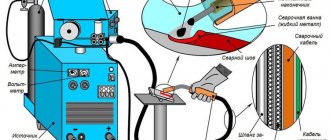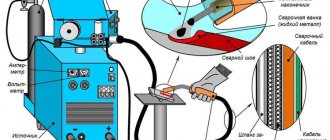Scratches on a new car always upset its owner. However, the only thing worse than the unaesthetic appearance of a brand new paint coating is rust, which slowly but surely covers an increasing area of the damaged surface of the car. Of course, this can be combated by timely removal of scratches and application of anti-corrosion primer. But sometimes, due to lack of time or finances, a motorist simply does not have the opportunity to have the car repaired or paint it himself. In such situations, fully galvanizing the car can save the day.
The benefits of galvanizing the machine body
Despite the presence of factory protective coatings on the car body, road dirt, salts, reagents, constant temperature changes and humidity cause damage to parts. Galvanizing, or galvanizing, helps stop or prevent metal corrosion that occurs when a machine is used for a long time in difficult conditions.
Body galvanizing is the process of coating metal with a layer of zinc to protect it from rust. Typically, metal is applied to the bottom, wheel arches and some other vulnerable areas of the car. As a result of manipulation, a galvanic couple is created, where zinc is a more active metal and a strong film is obtained on the surface of the iron. Galvanizing a car allows you to form a reliable anodic protection that “saves” the body from physical and chemical damage. Even when scratched, the zinc layer will be the first to be damaged, while the iron will remain intact.
Galvanic method
Galvanic galvanizing does not work well under all conditions. Below we present the optimal set of conditions and electrolyte composition.
Electrolyte composition.
- Zinc sulfate 200–300 g/l.
- Aluminum sulfate 20–30 g/l.
- Sodium sulfate 50–100 g/l.
- Dextrin 8–10 g/l.
- DCU 0.5–1 g/l.
Surface preparation.
Applying any coating to a car body requires careful preparation of the surface. You can’t do without it even before galvanizing. Before immersing a car part in a container with electrolyte, its surface must be thoroughly cleaned of dirt and oxides. Degrease and pickle with a special compound. If the surface of a body part is planned to be painted after galvanizing, it should be phosphated. For this, a 30-second treatment with a solution of the drug Majef is suitable, which must be diluted to a concentration of 30–40 g/l with the addition of 30–60 g/l zinc nitrate.
Of course, it is hardly possible to galvanize the entire car body at home. Therefore, cold galvanizing is more suitable for galvanizing a car body with your own hands at home.
Types of galvanization
There are different types of metal galvanizing:
- Galvanic. Zinc from a zinc-containing electrolyte is deposited on the surface of the body during electrochemical processes.
- Hot (thermal). The machine body is lowered into molten zinc. Zinc can also be applied to a metal sheet, which is then rolled, or sprayed from a special gun (shooping). The hot method is considered the most expensive, but the most effective type of galvanizing.
- Cold. It is most often used at home, as it is easy to carry out. It involves applying zinc to the metal surface in a manner similar to painting with conventional polymer paints.
- Diffuse. Zinc powder is used to process (sherardize) parts at a temperature of +290...+450 degrees or immerse them in zinc vapor at +800...+900 degrees.
Based on the completeness of processing, galvanizing is classified into complete, partial or partial. In the latter case, metal is applied only to individual components and connections. When purchasing a new machine, the type of galvanization performed can be clarified in the accompanying documents, which also indicate the thickness of the created coating and its warranty period. Professionals, even without documents, know which car models are galvanized at the factory and exactly how the metal is applied to body parts.
Hot-dip galvanized vehicles
Initially, this type began to be used at the Volkswagen and Audi factories, with the first galvanized production model being the Audi A80. Next, Porsche, Volvo and other automakers began to process car bodies using the hot method. Due to the high cost of hot galvanizing technology, it is used for premium machines. Among the inexpensive models that have received such reliable protection, we can point out:
- Chevrolet Lacetti;
- Chevrolet Epica;
- Opel Astra;
- Opel Vectra;
- Ford – Sierra, Mondeo, Escort;
- Fiat Albea;
- Fiat Marea.
During processing, a durable coating with a thickness of 2–10 microns is created (depending on the model and the specific manufacturing company), protecting the body from rust.
Machines with galvanic type galvanization
The cost of machines subjected to galvanic treatment is much lower than with the hot-dip galvanizing method. This coating method is used by Japanese, European, and American manufacturers. Since the protection will be worse, leading auto companies have introduced some improvements. Here are the main ones:
- zinc layer thickness – 9–15 microns;
- use of high-alloy steel without impurities;
- a durable layer of specially selected primer and paint.
Among the cars that have been galvanized using this method are some models of Honda, BMW, Mercedes, Alfa Romeo, as well as:
- Skoda Octavia;
- Skoda Fabia
- Renault Logan;
- Renault Espace 3;
- most from the Toyota lineup;
- Chrysler 300M;
- Mitsubishi Lancer.
Domestic cars
AvtoVAZ products were once made from foreign steel, which had already been galvanized. Due to the too high cost of imported material, the company switched to domestic steel, and the bodies began to be cold galvanized, which provides a low degree of protection. In Russian cars, not the entire body is galvanized, but only individual parts and components. Some compounds are processed by cataphoresis without the use of zinc.
Among Russian cars we can name:
- VAZ 2110 (approximately 50% of parts);
- Lada 4x4 (cataphoretic priming without galvanization);
- first generation "Kalina" (up to 52% of parts);
- second generation “Kalina” (galvanization of the entire body, except the hood, roof, side members);
- "Lada Priora" (100% body in modern models);
- "Lada Granta" (hatchback - galvanized wings, doors, sedan - no galvanized);
- "Lada Vesta" (fully galvanized, except for the thresholds);
- "Lada XRAY" (fully galvanized, except for the roof).
Since the protection created by cold galvanizing is not 100% reliable, during prolonged use it is broken and the metal begins to rust. If the impact is unfavorable, this process can begin within just a few years of driving a new car.
How to protect your car from corrosion
Why galvanize at all, and not tin or copper plating?
Automotive body steel is a complex and delicate alloy! It has nothing in common (except the presence of iron and carbon), for example, with “roofing sheet”. This alloy must ideally meet many special, often mutually exclusive, requirements. Therefore, its composition, chemical and heat treatment are always a compromise.
Only stainless steel does not rust (for example: 12Х18Н10Т) and 100% pure iron (it can only be obtained in space). Everything else where iron is present rusts, that is, it naturally oxidizes, because “Ferrum” (Fe, iron) is a very active chemical element.
A car can also be made from stainless steel, but in this case its body will be monstrously expensive and terribly low-tech. The only example is the DeLorean DMC 12, which became a legend thanks to the Back to the Future series. The irony is that having already become a “movie star,” John DeLorean’s company, which produced this stunning coupe, had by that time gone bankrupt due to the terrible costs of its production. The body can also be made from ordinary “roofing iron”, but then it will quickly crumble, wrinkle, deform, and be terribly heavy, albeit cheap.
John DeLorean (ex-President of Pontiac and Vice President of General Motors) and his “stainless” DMC 12
The main enemy of iron (Fe) is oxygen (O2)! O-two is found everywhere. It is present in small quantities even inside any part made of steel or other metals and alloys. Accordingly, if there is iron and air, after some time a corrosive coating appears. If water vapor also appears, especially water, the process accelerates hundreds, and sometimes thousands of times!
The main thing is the quality of the body steel
Friends! Please note - every year cars increase in size, expand and their configurations become more complex, but at the same time they become lighter and lighter! It’s interesting, what if the “naked” body of any of the modern cars, having the same characteristics of rigidity and strength, would have been created 30-40 years ago? It would weigh several tons, but today it would weigh some 300-400 kg! Because of which? It’s not because of the plastic, since we’re looking at a “naked” metal body?
Another interesting pattern: when introducing new models to the market, reputable manufacturers increasingly mention the use of super-strong and even hyper-strength steels with the highest elastic modulus values, which previously seemed fantastic, in their designs.
On the left is the body of a Peugeot 308 II (2013). On the right is the body of a Peugeot RCZ (2009). Notice how the use of hyper-strength steels has increased
“The box opens simply” - achieving such high performance becomes possible thanks to special heat treatment technologies for body elements and the introduction of metal alloys into the composition, allowing these elements to be “hardened” (I use this term to simplify understanding). The most common technology is that after multi-stage stamping, the part is subjected to complex heat treatment, with several temperings and heating (including “local” using high-frequency frequencies). In fact, pick up the wing of a modern car: it will be complex in shape, with intricate curves, thin and light, and... so strong that it is almost impossible to bend it with your hands, and when you tap your knuckles, you can hear a characteristic “boooommmm!” indicating , that this “piece of hardware” is clearly “hardened”.
“The other side of the coin” is the small thickness of the steel. If in the 60-70s body “tin” of 1.5-2 mm was considered thin, then in the second decade of the 21st century, tail metal of 0.25-0.5 mm became commonplace.
Naturally, the corrosion resistance of such thin structures comes to the fore, since now safety directly depends on it. In addition to the negative factors that directly affect the rate of occurrence and spread of corrosion - high temperature, the presence of moisture and salts, stone piercing and sandblasting - increased requirements for the quality, cleanliness and structure of body steel have been added. And here Peugeot, the PSA Group and Stellantis have traditional historical advantages over most other brands...
Steel and Peugeot
Long before the advent of the automobile, more than 200 years ago, the Peugeot family began to engage in metalworking and metallurgy, quickly gaining worldwide authority in this business. Peugeot is the inventor of cold rolling technology for steel and many alloys of ferrous and non-ferrous metals.
Peugeot steel and metalworking plant in Terre Blanche 1881. It was 10 years before the first Peugeot car appeared.
Having started producing cars back in the 19th century, Peugeot invested in them all its enormous metallurgical potential, know-how and advanced developments. The PSA and Stellantis group is one of the few car manufacturers that has its own, very impressive steel production, supplying its products not only to other car brands, but also to other industries.
The production of “clean steel” and alloys with a minimum content of impurities for body engineering has become a kind of “calling card” for PSA, a clear confirmation of which is the image of Peugeot and Citroen as “stainless” cars.
You may be surprised, but... Peugeot is among the inventors of special dental alloys!
This set was intended for dentists in 1884. “Clean steel” is a steel with a low content of soluble impurities and a minimum number of defects associated with the presence of oxides. The presence of elements in steel such as carbon, phosphorus, sulfur, nitrogen, hydrogen and oxygen can have a great influence on its most important properties for the automotive industry:
- tensile strength;
- ability to undergo plastic deformation without cracking during stamping;
- viscosity;
- weldability;
- crack resistance;
- corrosion resistance;
- fatigue strength.
The mutual influence of the listed elements on the properties of steel can be both beneficial and harmful. For example, carbon and nitrogen increase the hardenability of steel, but reduce its ductility, phosphorus also increases hardenability, but contributes to its brittleness, oxygen and sulfur (oxides and sulfides) make steel resistant to abrasion, but negatively affect toughness and fatigue strength. Therefore, for various applications, the number and size of inclusions are limited.
For comparison:
- In sheet steel for stamping barrels, the maximum oxygen content should not exceed 30 parts per million (ppm), nitrogen - 40 ppm, and the maximum size of non-metallic inclusions - no more than 100 microns;
- In sheet steel for automobile bodies, the maximum oxygen content is no more than 20 ppm, nitrogen – 30 ppm, and the maximum size of non-metallic inclusions is no more than 40 microns.
There is another important factor in the influence of impurities contained in body steel - susceptibility to the necessary chemical treatment and friendliness to protective coatings, of which the so-called “galvanization” comes first.
Is there galvanization or not - how to find out in practice
Before galvanizing a passenger car with your own hands, it is advisable to determine whether the procedure was done initially. If information about a new car can be found in documents (although not always), then with a used car the situation is much more complicated.
If you have documents indicating the technical characteristics of the machine, you should carefully read all the information. In the absence of the words “galvanizing” or “galvanizing”, we can confidently say that the metal was not processed. Only the expression “full galvanization” means the presence of high-quality anti-corrosion protection. Most manufacturers of economy-class cars use partial galvanization, so many body parts are still susceptible to rust.
It is impossible to determine for yourself whether galvanizing has been performed. You will have to contact a specialized center, because in simple auto repair shops such a technique is not practiced due to its high cost and complexity. The cost of research is high, so it is not always advisable. It is better to look for information about galvanizing a specific model on the Internet, although you cannot be 100% sure.
Trouble-shooting
Often there is no fundamental difference which engine is installed in a vehicle - the reasons that the engine stalls will be the same. In carburetor-type engines, a common reason for the engine stopping at idle may be an unadjusted drive, a dirty needle valve, or other problems. To eliminate such malfunctions and improve engine performance, change the fuel filter regularly. If the solenoid valve fails, the speed twitches or drops completely.
When the characteristic clicking sound is not heard when connecting, it is better to replace the valve. In diesel engines, the main role is played by the high pressure fuel pump. If this unit fails, the quality of the fuel, the condition of the electrical wiring, glow plugs and other parts are checked, and the fuel filter is changed. In injection engines, the air filter is first cleaned; it is possible that it will have to be replaced. If vibration is felt at idle, it is recommended to replace the gasket. Also, to eliminate the causes of engine shutdown, the injectors on the engine or on a special device are washed.
Self-galvanizing the body
Removing rust using galvanizing and protecting the body can also be done in a garage. Of course, the quality of the created zinc film will be worse than that of the factory one, but the metal will still last an order of magnitude longer and will not suffer from rapid corrosion. A similar procedure can be carried out to protect other metal products in everyday life.
Preparatory work
The procedure involves the use of phosphoric acid with dissolved zinc. To operate, you need to stock up on a salt battery or several batteries (depending on the volume). To treat a large area, you should buy the largest batteries, print them out, and remove the entire braid. The internal contents (soot, graphite rod) can be left, although they will not be required.
A cotton circle should be attached to the body of each cleaned battery, and on the reverse side - a power wire connected to the car battery. The easiest way to connect the wire and cotton wool is with a rubber band. You should also prepare the metal product to be processed - clean it from dirt, rust, degrease, and dry.
Galvanizing process
First you need to connect the minus and plus of the battery to the components of the galvanizing process. The negative terminal is connected to the desired part of the body, and the positive terminal is connected through a wire to the battery. Next, the order of work will be as follows:
- draw acid with dissolved zinc into a syringe (or a ready-made product, for example, “Zinkar”);
- soak a cotton pad on the battery case with acid;
- start the system, periodically moving the nozzle over the treated area, but always without stopping (otherwise the layer will not be uniform).
On sale you can find kits for galvanizing, which already include all the necessary tools and accessories, and the role of acid with zinc powder is performed by a ready-made composition.
Galvanizing method using “white powder”
For more efficient processing of metal with zinc, soldering acid is used instead of phosphoric acid. This is hydrochloric acid diluted with water with zinc dissolved in it. According to craftsmen, galvanizing with a similar composition lasts longer and penetrates deeper into the metal surface. Soldering acid is sold in radio equipment stores in small bottles. It can also be made by diluting zinc chloride, a white powder that is sold by weight.
Main stages of work
First, you need to pour zinc chloride into a strong container, pour in distilled water to get a clear liquid. Approximately 2.5 liters are needed per kilogram of product. You can put the entire part into the finished soldering acid, creating a galvanic bath. Before starting work, you should clean the product from rust with sandpaper or a grinder, and then activate the metal - remove the oxide film from its surface.
Metal activation
During activation, the positive terminal of the battery is connected to the part, the negative terminal is connected through a 20-watt light bulb to the electrode (an iron bolt wrapped in a cotton rag and soaked in soldering acid). As current is applied, the product will be cleaned of the oxide film. Only after its removal is the metal immersed in a galvanic bath and galvanizing is carried out in a similar way.
Galvanizing a car body with a battery in a garage
Self-galvanizing with a salt battery using the technology described above is popular among drivers. Usually it is made for the bottom and wheel arches, which deteriorate from rust faster than other body elements. A battery with cotton wool soaked in soldering acid is moved over the metal, pressing tightly to the surface. As a result, a film of silvery plaque is created.
Upon completion of work, acid residues must be neutralized by washing the part in a baking soda solution. This will reduce the risk of corrosion and enhance the protection created, extending the life of the machine.
